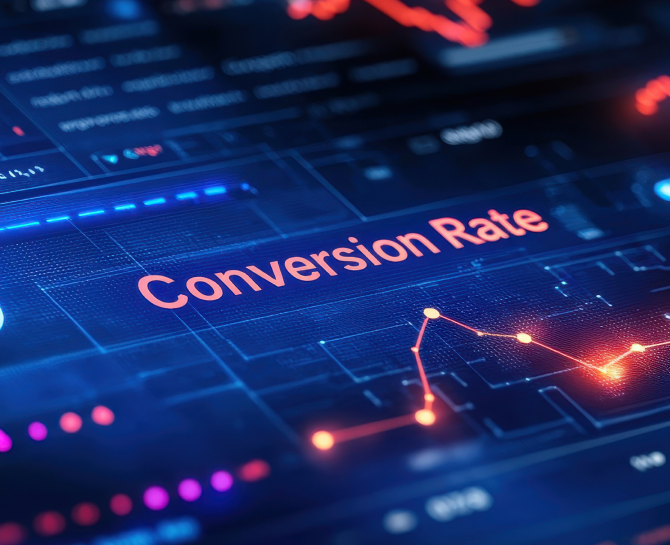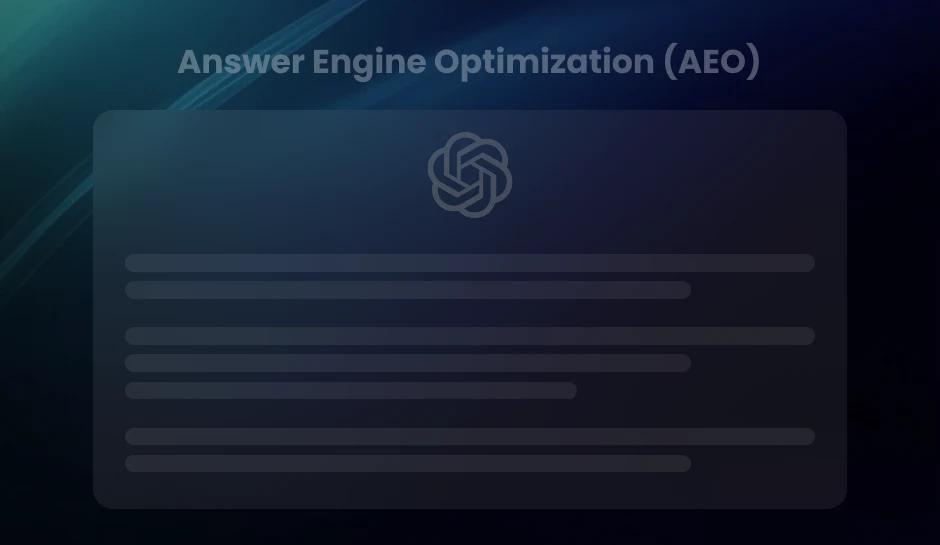
GA4 Conversion Attribution: Redefining How Marketers Measure Success
GA4 is changing the game with data-driven attribution models that give marketers a clearer picture of what drives conversions. Explore key features, FAQs, and tips to optimize your campaigns.
Attribution sits at the core of every data-driven marketing strategy. Assigning credit to customer touchpoints that lead to conversions reveals where leads come from, what channels influence decisions, and how marketing budgets should shift. Without precise attribution, evaluating campaign performance turns into guesswork.
Google’s shift from Universal Analytics (UA) to Google Analytics 4 (GA4) has altered this landscape dramatically. Gone is the last click bias that defined UA’s conversion logic. In its place stands an event-based model designed around user-centric tracking. GA4 observes interactions across sessions, across devices, and even across platforms, giving marketers a dynamic perspective on the customer journey.
With its support for data-driven attribution and a suite of multi-touch models, GA4 emphasizes behavior over individual visits. Which campaigns spark initial interest? What content seals the deal? GA4 answers these questions using modeled data that assigns conversion credit according to predictive impact, not just proximity.
How GA4 Redefines Attribution: From Universal Analytics to a Smarter Model
Session-Based vs. Event-Based: A Shift in Attribution Logic
Universal Analytics (UA) uses a session-based attribution model, tying user interactions to discrete visit sessions. Each user session is treated as a standalone container, with actions grouped and outcomes credited based on what happens during that single interaction window.
GA4 replaces this approach with an event-based data model, where every user interaction-pageview, click, scroll, video play, purchase-is tracked as an individual event. This change enables GA4 to stitch together actions across time, sessions, and devices, accurately representing how users navigate fragmented digital experiences.
Because events are not constrained to sessions, attribution in GA4 no longer relies on arbitrary session ends. Instead, it reflects how users behave online-interacting asynchronously and across multiple touchpoints. This fundamental shift creates a clearer, uninterrupted view of the user journey.
Moving Beyond Last-Click: Intelligent, Context-Aware Attribution
In UA, the default attribution model is the last non-direct click. This model allocates full credit to the final touchpoint before conversion, unless it’s a direct visit. It misses the role of top and mid-funnel interactions that influenced the conversion but didn’t receive credit.
GA4 incorporates more intelligent, data-driven models that consider the full attribution path. These include cross-channel rules-based models (such as linear and time decay) and machine-learning-powered data-driven attribution (DDA), which evaluates real engagement patterns across all interacting channels.
DDA in GA4 uses data signals-like interaction types, recency, and sequence-to apportion credit based on actual predictive value, not just chronology. Thus, early brand awareness campaigns, assistive remarketing touches, and influencer clicks can receive appropriate recognition, not just the final ad or organic visit that sealed the deal.
GA4 Delivers Holistic Insight into the User Journey
GA4 produces a more accurate, multi-dimensional understanding of the user journey by shifting to event-based measurement and enhanced attribution modeling. Unlike UA, which limits visibility to isolated sessions, GA4 tracks behavior across devices and platforms, using features like Google Signals to unify identities when available.
What does this mean in practice? Marketers can now analyze how a LinkedIn ad impression five days ago, a YouTube view two days ago, and a branded search this morning collectively influenced a purchase. GA4 doesn’t merely show the “last action,” it reveals the choreography behind a conversion.
- UA: Single-session, rules-based, last-click biased.
- GA4: Multi-session, event-driven, data-powered attribution.
This evolution isn’t cosmetic-it transforms how success is evaluated, which channels are rewarded, and where budgets should be focused.
Pro Tip- Leverage GA4’s Comparison Tool in Attribution Settings to analyze how different attribution models impact your conversion credit distribution. This allows you to justify budget shifts with evidence and better align marketing investments with true performance.
Decoding Conversion Paths in GA4
What Conversion Paths Show About User Behavior
In GA4, a conversion path captures a user’s entire journey before completing a conversion. This includes every touchpoint that contributed to the outcome across channels, devices, and sessions. Unlike the linear funnels of legacy analytics, GA4 structures this journey probabilistically, assigning credit based on modeled behavior rather than rigid position-based rules.
Each event in the user’s interaction history contributes context. For instance, a person might first discover a brand via a paid social ad, return through organic search, then convert after clicking an email retargeting campaign. GA4 tracks this multi-channel behavior across sessions, tying it to the same user ID or Google Signals identity, which allows for a broader view of influence.
How Channels, Touchpoints, and Devices Affect the Journey
GA4’s conversion path reporting exposes the interplay between traffic sources. Channels like Paid Search, Direct, Referral, and Organic Social often overlap in a single user’s journey. Marketers identify which channels initiate, assist, or close conversions by examining path length and position-based interactions.
Device type also reveals usage patterns. For example, discovery typically occurs on mobile devices, while purchases skew toward desktop sessions. GA4 links cross-device activity using the User-ID feature or Google Signals, tying each interaction to the same user even when they switch devices. This enables analysis of hybrid journeys-starting on a smartphone and converting later a laptop without losing attribution coherence.
- Touchpoint sequencing:
- Device transition mapping:
- Lag analysis:
Highlights whether certain channels perform better as initiators or closers.
Visualizes how users hop between mobile, tablet, and desktop before converting.
Measures the time and number of interactions between the first visit and final conversion.
Insights Marketers Can Extract From Conversion Path Analysis
Conversion paths reveal behavioral patterns that linear attribution models overlook. For instance, if organic search regularly appears in the middle of high-value conversion paths, this suggests it plays a crucial assistive role. Marketers can respond by strengthening middle-funnel content rather than just top-of-funnel visibility.
Teams refine content strategy, campaign timing, and retargeting tiers by analyzing the frequency and type of touchpoints in successful paths. Want to identify underperforming contributors? Flag channels that consistently appear in long paths without driving progress toward conversion.
Evaluate these metrics within GA4’s “Conversion Paths” section under “Advertising” reports. The platform displays a breakdown of all contributing touchpoints for each conversion, with positional context and credit distribution. Patterns emerge. For example, paid search might trigger action when paired with direct visits, but fail to convert independently. These nuances shape future budget decisions.
Identify optimal conversion sequences across audience segments.
Uncover hidden contributors like email or referral sources that rarely get last-click credit.
Measure the ROI of long-funnel campaigns targeting repeat engagement.
Start exploring with the “Path exploration” template. Filter by conversion event, audience, or source/medium to uncover the specific route taken by engaged users. The richer the segmentation, the clearer the strategy becomes.
Pro Tip- Use GA4’s “Path Exploration” with audience filters to uncover high-performing sequences by user segments—like new vs. returning users or mobile vs. desktop initiators—so you can tailor content and retargeting strategies to match actual user behavior.
GA4 Conversion Tracking Setup Guide
| Section | Action/Feature | Details |
|---|---|---|
| 1. Define Conversions | Event-based Tracking | GA4 uses events instead of Universal Analytics-style goals. You define meaningful user actions as conversions. |
| Access Events | Navigate to Admin > Events in your GA4 property. | |
| Mark as Conversion | Find your event (e.g., purchase, form_submit, sign_up) and toggle it on as a conversion. | |
| 2. Custom Events | Create Custom Event | Go to Configure > Events, click “Create Event.” |
| Define Parameters | Use filters like page_location, button_id, etc., to create a custom event. | |
| Mark Custom Event | After creation, go to Admin > Events, find your event, and mark it as a conversion. | |
| 3. Enhanced Measurement | Purpose | Auto-tracks standard engagement actions without needing custom code. |
| Access | Go to Admin > Data Streams > Web, then click your web stream. | |
| Enable Toggles | Toggle on desired Enhanced Measurement events. | |
| Tracked Events | Page views, 90% scroll, Outbound clicks, Site search terms, Video engagement, File downloads | |
| 4. Google Tag Manager (GTM) | When to Use | Use GTM for custom interactions GA4 doesn’t auto-track (e.g., specific button clicks). |
| Step 1 | Create new tag → Type: GA4 Event | |
| Step 2 | Link it to your GA4 configuration tag | |
| Step 3 | Define event name and parameters (e.g., event_category, form_name) | |
| Step 4 | Add a trigger (e.g., Click Listener on “Sign up now” button) | |
| Step 5 | Publish and test in GA4 real-time reports | |
| 4. Google Tag Manager (GTM) | Use Cases | Track micro-conversions like scrolls, video starts, or form interactions |
| 5. Focus on High-Value Conversions | Prioritize Business Value | Only mark events that impact your business goals |
| Examples of Valuable Conversions | Completed checkouts, Demo requests, Email sign-ups, Trial activations | |
| Conversion Limit | GA4 supports up to 30 active conversions per property |
Attribution Reports in GA4: Accessing the Data That Matters
Working with Attribution Reports and Explorations
GA4 organizes critical attribution insights into standardized reports and custom explorations. The Advertising section houses the most comprehensive attribution data, accessible under Attribution. These reports break down how users interact with different marketing channels before converting. Unlike Universal Analytics, GA4 presents attribution within a cross-platform, user-centric framework.
The Model Comparison and Conversion Paths reports serve distinct purposes but complement each other. One reveals the effect of attribution models on conversion credit allocation, while the other visualizes sequences of user interactions that led to a goal. Together, they clarify which touchpoints influenced conversion behavior across channels and sessions.
Key Attribution Metrics to Monitor
- Conversion Value:
- Conversions:
- Days to Conversion:
- Touchpoints per Conversion:
This metric aggregates the monetary impact of tracked conversions. When paired with attribution models, it uncovers how much value each channel or touchpoint generated.
This count shows how many times a user action marked as a conversion has occurred under each attribution model.
Use this timeline metric to analyze the delay between first interaction and conversion, highlighting the complexity of user journeys.
Understanding how many interactions happen across the funnel informs content and campaign optimization strategies.
Using the Model Comparison Report
Within Advertising Attribution Model Comparison, users can compare how different attribution models distribute credit across traffic sources. The report defaults to “Data-driven” vs “Last Click,” but model pairings can be changed. This analysis determines how sensitive channel and campaign performance is to attribution logic.
For example, when comparing “Last Click” to “First Click,” organic search may receive significantly more credit under one model, altering performance narratives. Custom date ranges and conversion events refine this insight further. Businesses with long sales cycles often see major paid vs. organic impact shifts depending on model selection.
Exploring Conversion Paths
The Conversion Paths report reveals the full customer journey using touchpoint sequences. It displays both early and late touch interactions, along with the last touchpoint. Channels appear in the order in which users interacted with them leading up to a conversion, mapped to conversion count and credit.
A B2B company might see sequences like: Paid Search Direct Organic Search. Each touch provides clues on how users progress from awareness to action. Marketers can identify top-performing journey flows and fine-tune channel strategies accordingly. Filtering capabilities allow segmentation by device, geography, and user engagement patterns.
Want to inspect deeper patterns? Use the Explore tab to create custom explorations. The Path Exploration and Funnel Exploration techniques enable visualization of exact user behavior before and after conversion triggers.
The Overlooked Impact of Assisted Conversions in GA4 Attribution
Defining Assisted Conversions and Their Function in the User Journey
Not every valuable interaction ends in a direct conversion. Many users spend time researching, comparing, and evaluating before taking action. Assisted conversions represent those pivotal waypoints in a multi-touch journey-touchpoints that don’t close the deal but influence the decision.
In GA4, assisted conversions track the intermediary channels or touchpoints that contribute to a user’s path toward conversion without being the final interaction. These supporting roles often include awareness-stage interactions, which nurture intent over time. Think of a user clicking a paid ad, reading a blog post via organic search, later clicking a remarketing display ad, and finally purchasing after an email promo. That blog post? It didn’t convert, but it played a part-and GA4 catches it.
Top-of-Funnel Contributors: Organic Search, Social Media, and Beyond
Top-of-funnel sources-the channels that initiate but don’t finalize conversions-include platforms like:
- Organic search:
- Social media referrals:
- Display ads:
A Google search that leads a user to a content page, sparking initial interest.
Facebook, Instagram, or LinkedIn links that attract browsing users into the funnel.
Visual campaigns designed to build awareness and brand recall rather than close a sale.
While these touchpoints rarely get last-click credit, eliminating them would often reduce total conversions. For instance, a user discovering a SaaS product via LinkedIn may later convert through direct access to the site-without recognizing the initial role LinkedIn played in planting the seed.
How GA4 Captures and Credits Assisted Conversions
GA4 uses Data-Driven Attribution (DDA) to assign fractional credit across all meaningful interactions, including assists. Rather than relying on rigid models like last-click, GA4 calculates the influence of each touchpoint based on conversion probability shifts produced by a channel’s presence or absence.
In attribution reports, GA4 provides two distinct columns:
- Conversion credit:
- Assisted credit:
Credit given to the final converting channel in the attribution model.
Distributed among non-final interactions that influenced the outcome.
Marketers can visualize how top-of-funnel engagements support the acquisition funnel using the Conversion Paths report. The inclusion of Path Position lets analysts break down a channel’s role as first, middle, or last in the chain, making it easier to understand assist-heavy contributors.
Want to know which channels lift your conversions without closing them? Filter by first and middle position to uncover where your silent performers actually sit. GA4 doesn’t just tell who scored; it shows who set up the play.
Pro Tip- In GA4’s Attribution reports, filter by “Path Position” to spotlight first- and mid-touch contributors—these often-overlooked assists can inform where to scale brand awareness and content investments that quietly drive long-term conversions.
Understanding Lookback Windows in GA4 Attribution
What Is a Lookback Window and Why Does It Matter?
In GA4, a lookback window defines the time frame during which a touchpoint-such as an ad click or user interaction-can be credited for a conversion. This setting directly influences how attribution models assign value to marketing efforts across the user journey.
Every conversion is tied back to user activities within a defined period before the conversion event. If a user first engages with a campaign but converts weeks later, GA4’s lookback window setting determines whether that initial touchpoint receives credit. In practical terms, a short lookback window may under-credit higher-funnel campaigns. In contrast, a longer window better reflects delayed conversion behavior, especially in industries where decision-making cycles span weeks or months.
GA4 Lookback Window Settings and Customization
| Category | Attribution Model | Default Lookback Window |
|---|---|---|
| Data-Driven Attribution | Machine learning-based attribution | 30 days |
| Cross-Channel Rules-Based Models | Last Click, Linear, Position-Based, etc. | 90 days |
| Ads-Preferred Attribution | Google Ads-focused model | 30 days |
Custom Lookback Window Options
| Lookback Window | Recommended Use Case |
|---|---|
| 30 Days | For short sales cycles or impulse purchases |
| 60 Days | Ideal for medium-length consideration periods with ongoing campaigns |
| 90 Days | Best suited for B2B or high-value consumer purchases involving extended research |
How to Adjust Lookback Windows in GA4
| Step | Action |
|---|---|
| 1 | Go to Admin > Attribution Settings in your GA4 property |
| 2 | Choose a custom lookback window (30, 60, or 90 days) |
| 3 | Confirm changes (note: they affect future data only, not historical attribution) |
Measuring Long Purchase Cycles More Accurately
Short windows obscure the influence of early touchpoints in lengthy conversion paths. For sectors such as enterprise software, automotive, or real estate, buyers often take weeks to compare options, consult stakeholders, or schedule demos. A 30-day window misses early research and upper-funnel engagement. In contrast, a 90-day lookback allows those front-end efforts to receive proportional credit, delivering more accurate performance insights.
How Google Signals and Logged-In Users Refine GA4 Conversion Attribution
What Is Google Signals and How Does It Improve Attribution Accuracy?
Google Signals activates when users are signed into their Google accounts and have opted into Ads Personalization. Once enabled in GA4, it enhances attribution by stitching user interactions across devices and sessions that would otherwise appear disconnected.
Instead of attributing each session to a separate anonymous user, Google Signals links them under a unified user ID, derived from the user’s logged-in Google profile. This significantly improves GA4’s ability to deliver more accurate cross-device attribution. For instance, if someone begins researching a product on a mobile device during a train ride home and completes the purchase later on a desktop, GA4-with Google Signals-connects those touchpoints and assigns proper credit.
Without it, GA4 would struggle to identify the same user across devices, creating fragmented paths and reducing the precision of multi-touch attribution models like data-driven attribution (DDA).
Cross-Device and Cross-Platform Tracking Through Logged-In Google Accounts
GA4 leverages Google’s identity graph when Google Signals is active. This allows the platform to recognize logged-in users across smartphones, tablets, desktops, and browsers. Behavioral data from YouTube, Google Search, and other Google-affiliated properties integrates into these attribution paths, enabling marketers to see user behavior across platforms with far more continuity.
This capability transforms GA4 from a session-based analytics tool into a user-centric measurement platform. Marketers can view longer, richer conversion paths that span email campaigns, social media clicks, YouTube ads, and organic Google Search visits. Logged-in user signals clarify who the user is and when and where they’re interacting along the funnel, from discovery to purchase.
Considerations for Privacy and User Consent
GA4 only activates Google Signals for users who have:
- Signed into a Google account
- Turned on Ads Personalization
Consented to data usage under applicable privacy laws and configurations
Because of this, attribution modeling using Google Signals doesn’t reflect all users, just the subset that meets those conditions. That means results from models enhanced with Google Signals represent directional insights and need to be contextualized accordingly.
GA4 automatically respects user consent signals such as Consent Mode, which modifies data collection based on user preferences. If a user opts out of tracking or declines consent for ads personalization, GA4 refrains from associating their activity with Google Signals-derived identifiers. This doesn’t prevent data collection altogether but restricts identity stitching, reducing visibility across devices.
Want to verify if Google Signals is active in your GA4 property? Head to the Admin panel, then click on Data Settings > Data Collection. From there, enabling or auditing Google Signals becomes straightforward.
Pro Tip- Ensure Google Signals is activated in your GA4 settings to improve cross-device attribution accuracy. With Google Signals, your conversion paths will reflect true user behavior, even across devices, providing richer insights for data-driven decisions. Regularly audit this feature to keep your attribution models aligned with current user behavior.
Why Modern Attribution in GA4 Redefines Conversion Analysis
GA4 replaces fragmented, last-click-focused evaluation with a unified attribution system that decodes the full user journey. Attribution no longer reduces success to a single touchpoint. It distributes credit across interactions-paid and unpaid, early and late-to reveal which combinations drive conversions.
Marketers now see beyond the final click. Data-driven attribution in GA4 uses machine learning to assess how each channel contributes to a conversion, grounded in probabilities calculated from observed behavior. This approach removes guesswork and exposes the collective impact of ads, search, social, and direct traffic.
Compare that to Universal Analytics, which limited marketers to rigid models. GA4 supports flexibility. You can change attribution settings, use customizable lookback windows, and analyze assisted conversions to pinpoint the channels that do the heavy lifting-even if they don’t close the deal.
Every interaction matters. A discovery visit through organic search, a branded campaign retargeting on YouTube, and the cart recovery reminder via email-GA4 weaves these moments together. Individual data points become a narrative of behavior, intent, and decision-making.
Moving beyond last-click opens the door to smarter media planning, more efficient budgets, and granular campaign refinement. Audiences engage across platforms and repeat visits-GA4’s attribution framework captures this reality and turns it into action-ready intelligence.
Instead of giving all credit to the final touch, ask deeper questions: What channels started the journey? Which ones built momentum? Where did users drop off and re-engage? These answers live in the attribution reports, ready to be dissected, filtered, and acted on.
Modern attribution is not a trend-it’s the foundation of measurable growth in a multi-device, cross-platform ecosystem. Everything GA4 tracks-events, audiences, sources, paths-feeds into one core objective: telling the real story behind why users convert.
Key Takeaways
- Google Analytics 4 uses machine learning to assign credit across the full customer journey, providing a more accurate and fair representation of channel performance than Universal Analytics’ last-click model.
- GA4’s event-based model captures granular user interactions across devices and platforms, offering a complete view of how customers engage before converting.
- With multi-touch attribution and tools like Conversion Paths, GA4 uncovers the assistive roles of early and mid-funnel interactions often overlooked in traditional reporting.
- Marketers can adjust lookback windows for long sales cycles and leverage Google Signals to unify user journeys across devices, enhancing accuracy and strategy.
GA4 conversion attribution helps you understand customer journeys and touchpoints that contribute to conversion. Want to understand how?
Our team will help you attribute successful conversions through GA4 conversion attribution. Drop us a line at info@diggrowth.com to get started.
Ready to get started?
Increase your marketing ROI by 30% with custom dashboards & reports that present a clear picture of marketing effectiveness
Start Free Trial
Experience Premium Marketing Analytics At Budget-Friendly Pricing.

Learn how you can accurately measure return on marketing investment.
Additional Resources
Don’t Let AI Break Your Brand: What Every CMO Should Know
AI isn’t just another marketing tool. It’s changing...
Read full post postFrom Demos to Deployment: Why MCP Is the Foundation of Agentic AI
A quiet revolution is unfolding in AI. And...
Read full post postAnswer Engine Optimization (AEO): The New Frontier of SEO in 2025
As digital experiences continue to evolve, so does...
Read full post postFAQ's
GA4 conversion attribution refers to assigning credit to different marketing touchpoints (e.g., ads, organic search, email) along a user's journey that leads to a conversion. GA4 uses data-driven attribution (DDA) by default, which distributes credit based on the actual contribution of each interaction.
Unlike Universal Analytics, which used last-click attribution by default, GA4 primarily uses data-driven attribution. This model uses machine learning to assess how each touchpoint contributes to a conversion, providing a more holistic and fair view of marketing effectiveness.
GA4 allows you to choose from several attribution models for reporting purposes, including data-driven, last-click, first-click, linear, time decay, and position-based. However, data-driven attribution is set as the default for most conversion events.
The lookback window determines how far back in time GA4 considers user interactions when attributing conversions. You can customize it (up to 90 days), which is crucial for long sales cycles where early interactions may significantly influence.
The Conversion Paths report in GA4 shows the sequence of user touchpoints across channels that led to a conversion. This helps marketers identify patterns, see the assist value of upper-funnel channels, and optimize strategies based on user behavior.


